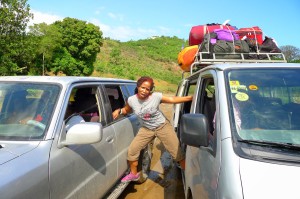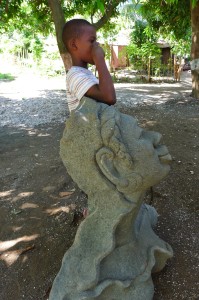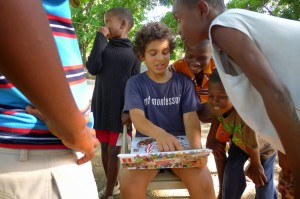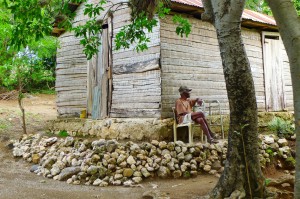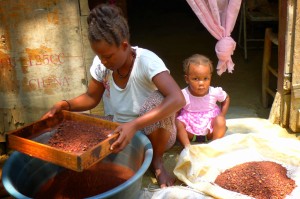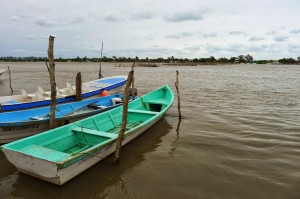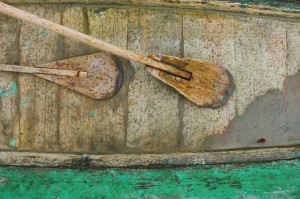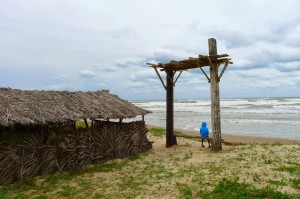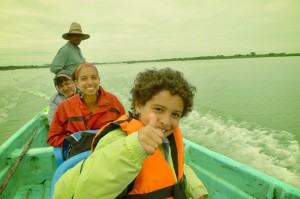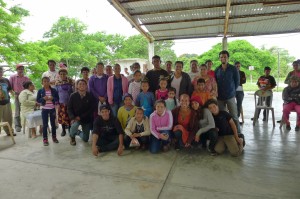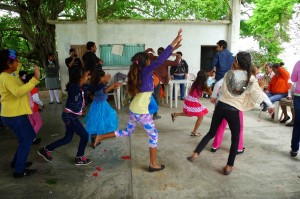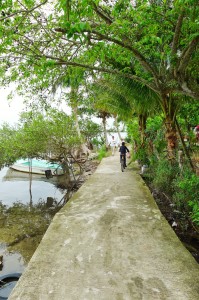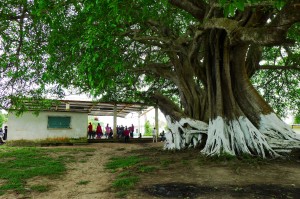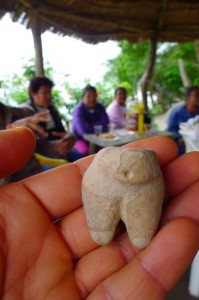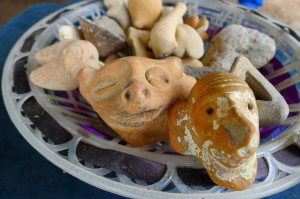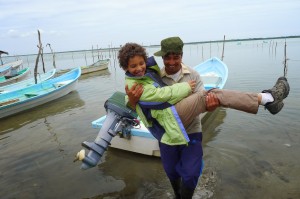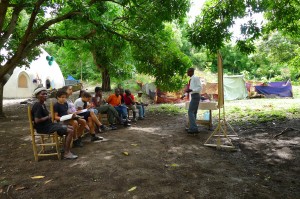We arrived home at Soul Fire Farm at 3 AM early in April, under a brisk starry night and crunching through stale snow. The house was so familiar and so completely strange. Despite the late hour, the children tore from room to room marveling at the drinking water coming from the tap, the sound of the strings on the full sized harp, remote control toys, and the Rowe’s thick winter fur. It took us a full two weeks to fully “arrive” back home, and by then, we were on a plane to Haiti.
During our visit to the US, we were blessed to meet our beautiful nephew Aviv and witness the careful and attentive love with which he is being parented. We also pruned the raspberries, set up the irrigation, prepared for baby chicks, planted peas and greens in the high tunnel, and seeded flats of hot crops. (Amazing amount of tasks for a Sabbatical year!) Our house was packed full of kids and adults every day so that Neshima and Emet especially could connect with their friends. We hosted our 5th annual Drinking Gourd AfroSeder, a cozy and joyful Passover event that retells and celebrates Black-Jewish ancestral and personal stories of liberation with lots of song, theatrics, tears, and incredible food. We also convened the first meeting of the Board of Soul Fire Farm Institute along with our fundraising Angels. Each person received from our hands a kernel of maize representing how we will all now hold the vision and work of Soul Fire together, a shift from the times when leadership was held only by our family.
Just before leaving for Haiti, my sister Naima and I made a visit to Tech Valley High School to receive a donation from my students toward the work of Ayiti Resurrect. On their own initiative, they raised over $1000 for community and land healing work in Haiti. So proud of them. Ayibobo!
This was our 5th year working in Haiti, but Jonah’s first time accompanying the delegation. He was able to witness the profound resilience of Komye and also deepen his knowing of his wife and children by touching one of their ancestral lands. Since the 2010 earthquake, the Komye community has constructed earthbag homes and an educational center, terraced hillsides and reinforced them with living erosion barriers, planted thousands of fruit trees, created artisan cooperative for stonework, chocolate, and coffee, set up foreign language and literacy classes for adults, and created tree nurseries in the schools.
Jonah and I were involved mostly in the sustainability and agriculture projects. Collaboratively, we planted 225 moringa trees well protected by vetiver-reinforced terraces. Moringa leaves are rich in vitamins and calcium, the seeds rich in protein, and the roots able to fix nitrogen symbiotically. We trained community members in water sanitation methods, including the use of moringa seed powder to kill infectious agents and methods for creating handwashing stations out of recycled materials. We helped expand the community herbal garden and offered massage at the free natural wellness clinic. I facilitated a planning meeting to address the water shortage in the community, where we invited a water engineer to help decide on a course of action and to begin to gather funds to realize the well. I also helped to bring a novel and tenuous peace between some members of Barrier Jeudi and Bigonet, who decided that they could (at least for now) collaborate to offer a health clinic for the families of both communities.
Perhaps most precious, was our participation in a Milocan ceremony, a traditional Haitian rite the welcomes a person into a community of reverence for the ancestors and the lwa (divine forces of nature). We gathered at the sacred mapou tree with roots taller than us, reaching out like octopus arms in the 4 directions. The mambo (mother of power) drew a veve on the earth and adorned it with candles and gifts for the lwa. The night was rich in song, drumming, and dancing, and we processed to the starry hill sides to salute various ancestors that reside there. On the way back to our campsite from the ceremony, we rode in the back of a hauling truck across the muddy and rutted river bed. To enliven this adventure, we sang 90’s pop songs and freestyled verses. Lots of laughter and happy shouts were born.
We are now back in Mexico for our final month of learning and teaching as part of the Fulbright program. These weeks we are getting to know how people are working for food sovereignty and cultural self-determination in the Afro-descendent communities along the coast of Veracruz and Oaxaca. This week, we visited Colectivo AfroTamiahua, initiated by the inspiring Careaga family. With our new friends Lupita, Hector, and Alain, we traveled to some of the more remote pueblos in Tamiahua and learned how they are preserving traditional African fishing technology, as well as protecting turtle nesting habitat, and sustainably cultivating the sandy soils. We were surprised and honored that large crowds gathered to welcome us and listen to what we had to say. With a little improvisation, we decided to share about the work of Soul Fire Farm, especially as it related to empowerment of Afro-descent people, the Black Lives Matter movement, and the international Diasporic exchanges that we facilitate in Haiti. Folks were inspired and want to host a “convivio” like Ayiti Resurrect in their own community. When I asked what their message was for the rest of the African Diasporic family, they said, “We exist. Come and see us and we can learn from each other. We are family.” Ase!
We would be remiss to omit the joy that is Xalapa, our home base for the first couple weeks of this journey. This city is national ground zero for African dance, percussion, and capoeira outside of DF. The leaders of the dance community traveled together to study in Guinea and brought back their passion and skill. They created a cultural ecovillage where they host workshops, including the annual Raices where top teachers from around the world converge on the land for around the clock celebration of culture. They also happen to have an aerial silks rig and a very Soul Fire energy, but surrounded by lush almost impenetrable forests and fresh, cool rivers. Oh, yes! Almost home.

